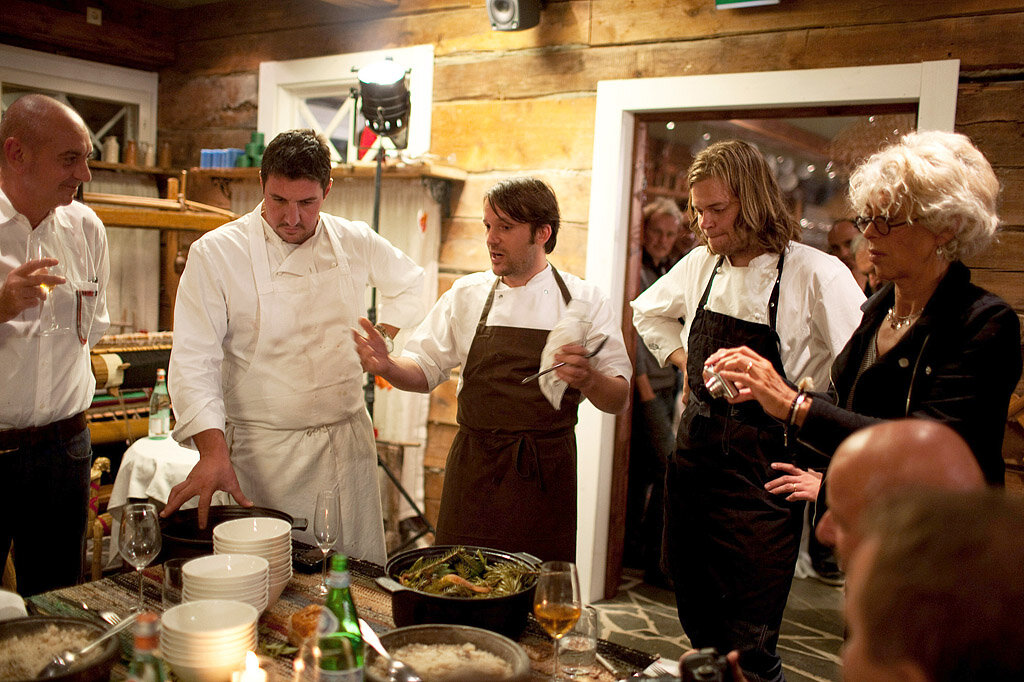Across the Nordic region, a quiet but steady food revolution began in the early 2000s. It was not driven by technology or industry, but by a desire to rethink how people relate to the land and to what they eat. Much like a big small casino game where every move can change the result, Nordic cooking is built on small choices that, together, shape a larger system of meaning.
At its core, this movement is about reconnecting food with place. The short summers, long winters, and scattered population of Northern Europe have always forced people to adapt. The old methods of drying, fermenting, and preserving became essential for survival. What began as a necessity has now turned into a philosophy that values restraint, resourcefulness, and care for the environment.
Looking Back to Move Forward
The idea behind the Nordic Food Movement is not new. People in these regions have been cooking with local ingredients for centuries. What changed in the early 21st century was the way chefs and communities began to speak about it.
They started to ask direct questions: What defines Nordic taste? How can food traditions survive in a globalized world? The answers came from looking back at the natural surroundings — forests, cold seas, and farmland. Instead of importing distant products, cooks began to use what was nearby, turning local plants, grains, and fish into modern dishes that still felt familiar.
This approach is both practical and cultural. It values what grows naturally and challenges the idea that progress in cooking must always come from novelty. In doing so, it also promotes self-reliance and reduces dependence on imported food systems.
Fermentation as a Living Tradition
Fermentation is one of the most visible techniques within this movement. It allows food to last through the long Nordic winters and adds depth to simple ingredients. What makes it so central is its symbolic value: it represents patience, transformation, and the acceptance of time as a necessary ingredient.
Cooks use fermentation to bring out flavor in vegetables, grains, and seafood. It requires close observation rather than control. Each batch is slightly different, depending on the air, temperature, and the microbes involved. This uncertainty is not seen as a flaw but as part of the process.
In this way, fermentation becomes a quiet act of respect for natural forces. It teaches that preservation can also be creation — that something ordinary, when given time, can turn into something more complex. The practice fits neatly with the broader Nordic mindset: simple tools, careful timing, and an understanding of how to work with what the land provides.
The Role of Foraging
Foraging connects directly to the land and sea. Across the Nordic countries, people collect plants, berries, mushrooms, and seaweed that grow freely. It is not only about gathering food but about learning what the environment offers in each season.
Modern chefs have turned foraging into a way of learning from nature rather than just using it. By walking through the forests and coasts, they discover ingredients that rarely appear in supermarkets but carry strong local character. The taste of juniper, the sharpness of sorrel, or the salt of coastal greens all tell a story of where they come from.
Foraging also helps define a food culture that is both regional and sustainable. It reduces waste and encourages a direct relationship between people and their surroundings. When cooking with what can be found nearby, there is no need for long supply chains or imported ingredients that leave a larger environmental mark.
Ethics and Sustainability
The Nordic Food Movement is not about luxury. Its ethics are grounded in care — for land, animals, and community. Sustainability is not an afterthought; it is part of every decision.
Farmers and cooks work closely to ensure that production and consumption stay in balance. The goal is not endless growth but long-term stability. Many kitchens use everything that comes from an ingredient: bones for broth, peels for stock, grains for feed. This cycle of use and reuse keeps waste low and maintains respect for resources.
This idea has spread beyond professional cooking. Home cooks, small farms, and local schools have begun to follow similar principles, teaching that good food is not about abundance but attention. Eating locally and seasonally becomes a shared responsibility rather than a trend.
A Wider Influence
The ideas born in the North have reached far beyond the region. Restaurants and communities around the world now experiment with similar ideas: shorter supply chains, seasonal menus, and preservation as a creative tool.
The influence is cultural as much as culinary. It has helped redefine what “fine dining” means. Instead of luxury ingredients, quality is now measured by honesty and craft. The Nordic model showed that a strong sense of place can be more powerful than imported prestige.
Continuing the Conversation
The future of this movement depends on how it adapts. Climate change threatens the ecosystems that make local sourcing possible. Rising temperatures, shifting seasons, and changing coastlines all affect what can grow or be gathered. The same philosophy that inspired this movement — adaptability, observation, and care — will also guide its response.
If the past two decades are any sign, the Nordic approach will keep evolving while staying true to its roots. It reminds the world that food culture does not need constant reinvention to stay alive. Sometimes, looking closer at what already exists offers enough inspiration for generations to come.







